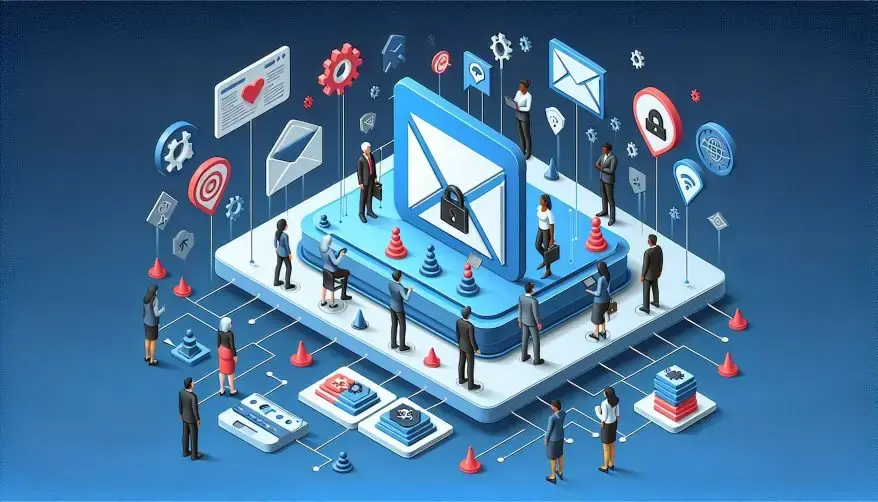Building a Culture of Cyber Awareness Through Phishing Simulation
Phishing attacks are getting increasingly sophisticated and common. Unfortunately, it takes just one weak link in the organization to interact with an undetected phishing email and put your entire system at risk. Moreover, traditional security solutions like secure email gateways (SEG), firewalls, and spam filters aren’t adept enough to detect and mitigate these threats.
The global average cost of a data breach is approximately $4.4 million, with a majority of teams lacking the skills to manage it or prevent its proliferation. Despite many organizations’ significant security budgets, the biggest cause of these breaches is employee error.
Mistakes that may seem trivial, such as clicking on credential harvesting links, opening ransomware-infected attachments, or authorizing payments to parties masquerading as legitimate contacts, can lead to costly breaches, fraud, fines and reputational damage.
Therefore, it is critical to build a culture of awareness through effective security training, empowering employees to make better decisions. One sure-fire and proactive approach is through phishing simulation. These simulations help organizations go beyond generic training and educate employees in real-world conditions.
Let’s see how phishing simulations can be leveraged to build a resilient cybersecurity culture in your organization.
The Significance of Building a Cybersecurity Culture
A strong security culture builds an effective human layer of defense against the most sophisticated threats. It sends a strong message across the organization that security is a top priority, thus building a collective security mindset and behavior.
Besides having security policies, protocols, and training in place, a cybersecurity culture instills shared responsibility and vigilance across every role. One 2025 report reveals that the biggest cause of breaches is the human element, which involves errors, misuse, or social engineering attacks. Phishing is frequent, with the target being employees. And the cost isn’t limited to downtime or data loss – it costs an organization its reputation, trust, and long-term revenue.
Employees can prevent even the most sophisticated attacks when they receive thorough training through awareness sessions and phishing simulations. For instance, a phishing simulation can teach them to recognize malicious links and pay attention to unusual activity. Moreover, it will change the mindset that cybersecurity isn’t just the responsibility of the IT or the security team. It is a collective effort towards creating a secure future for all.
By building a strong cybersecurity culture, employees will learn to recognize threats and feel accountable for their actions, making them the most effective first line of defense. To achieve this, awareness-building and behavior-changing programs must be embedded into the routine workflow.
The Role of Phishing Simulations in Building a Cybersecurity Culture
Traditional security awareness programs heavily relied on theoretical training. However, getting employees to be mindful of security best practices requires more than mere lectures. They must stay vigilant throughout their busy days, act on best practices and see their impact. That’s where phishing simulations come in.
A phishing simulation bridges the gap between awareness and action. A mock attack tests how employees respond to malicious attack attempts by sending them fake suspicious emails and messages in real time.
These simulations mimic the tactics real attackers use without the risk of real harm. For instance, they create fake login pages, urgent requests, or convincing email domains, and train employees on the consequences. When an employee clicks on a link or successfully identifies a message that looks suspicious, the system captures that behavior and offers constructive feedback via micro-lessons.
The experiential learning approach is far more effective than theoretical training sessions. It replaces the process of giving employees a list of dos and don’ts with a process that internalizes good security practices through real-world experience. Exposure to phishing simulations over time trains employees to identify red flags, pause before reacting, and develop intuition around potential cyber fraud and threat attempts.
Phishing simulations can also be personalized and role-specific. They don’t just measure security knowledge; they improve it iteratively and measurably, in accordance with each team member’s familiarity gaps.
By investing in phishing simulations, organizations can improve their security posture by making employees more vigilant while safeguarding the company’s assets.
5 Core Elements of a Successful Phishing Simulation
The goal of a phishing simulation is to educate, empower, and transform an employee’s security behavior over time. Here are five essential elements that make a successful phishing simulation.
1. Personalization and Gamification
In this era of personalization, the one-size-fits-all approach doesn’t work. Moreover, employees expect training and simulations to be more interactive and gamified.
A successful phishing simulation program takes into account every participant’s role, department and past behavior. For instance, you should send the design team fake graphic design app download emails, while you can target the HR team with fake candidate emails. Also, adding gamified elements in the simulation, like leaderboards or badges, can make the process more engaging and competitive.
2. Continuous Feedback Loops
When an employee sees a simulation, they need to know how they performed. This is why context-aware feedback is critical.
For instance, if a team member clicks on a simulated phishing link, the system must immediately deliver an alert and explain how the user can be more vigilant in real life. Sharing immediate feedback reinforces security best practices, helping employees to transform their mistakes into learning opportunities.
3. Role-Based Scenarios
As mentioned earlier, every department and role faces unique challenges when it comes to cybersecurity. For instance, mid-level executives may be prime targets for spear phishing. On the other hand, you could test the IT team on credential harvesting. Similarly, the finance department needs testing related to fake vendor invoice scams.
Role-based simulations better prepare team members for real-world threats, making the training more memorable and relevant.
4. Leadership Involvement
Encouraging everyone, including the C-suite, to participate in phishing simulations sends a powerful message throughout the organization. It shows that cybersecurity is a collective responsibility, and mistakes can happen across roles. This is especially true when the results are shared openly.
Furthermore, when leaders are involved, they see the benefits of investing in these initiatives. In this manner, obtaining a buy-in for the security budget becomes easy.
5. Integration with a Broader Security Awareness Program
Phishing simulations are highly effective, but organizations should not consider them a standalone strategy. Integrate it as a part of the organization’s formal security training process.
These simulations, coupled with regular policy updates, threat intel briefings, and an intuitive reporting dashboard, will help in building a holistic cybersecurity awareness strategy that reinforces the security culture.
Get Started with Phishing Simulations in Your Organization
Adding phishing simulations to your existing security awareness training doesn’t demand a complete overhaul. Begin by assessing your team’s current cybersecurity awareness levels. Besides, study the nature of threats each department faces.
Use this information as a baseline to customize your simulation so that it aligns with the threats each team faces and the industry’s compliance requirements.
Start this process with one department, monitor how they engage, identify the vulnerabilities they struggle with, and refine scenarios accordingly. Be transparent and supportive during the process, communicating to the team that the goal is to improve awareness, not to reprimand any team member.
Summing Up
Your organization’s security is only as strong as your team’s ability to stop the malicious actors trying to trick them. Phishing simulations offer a practical and engaging method to build lasting security awareness and transform your team’s behavior over time.
Use the tips shared in this post to build a resilient and security-conscious culture that can outsmart the most sophisticated and deceptive threats.
To stay updated with the latest developments in the field of science and technology, we recommend checking out more posts on ENTECH Digital Magazine.






